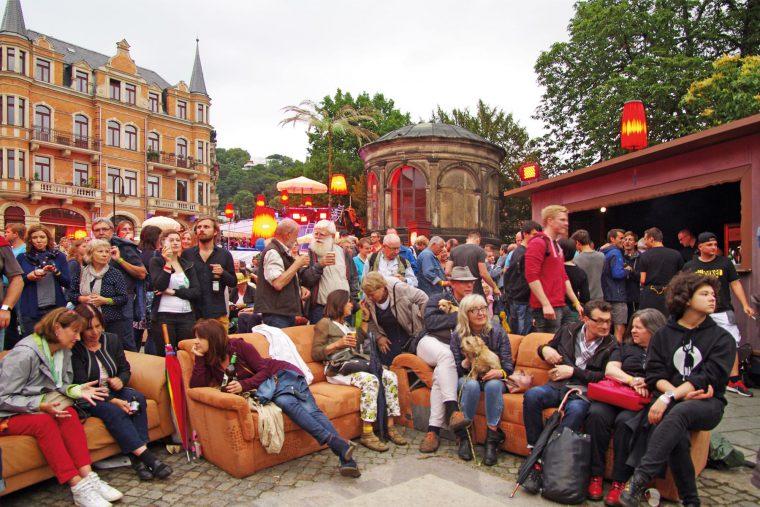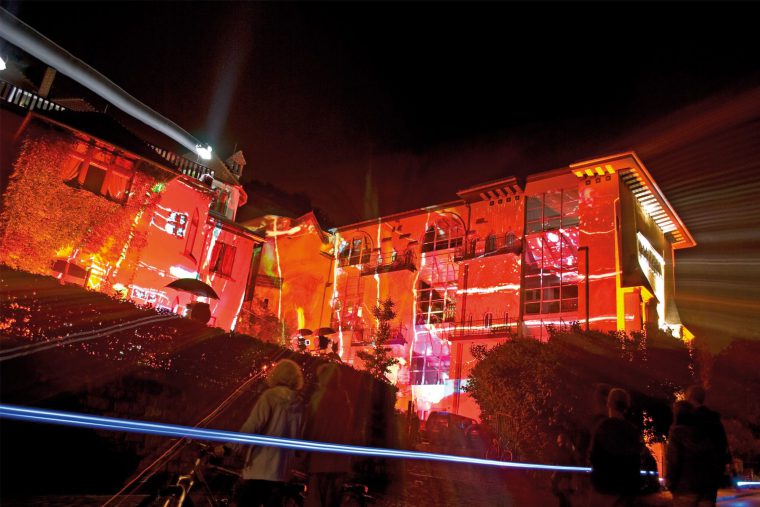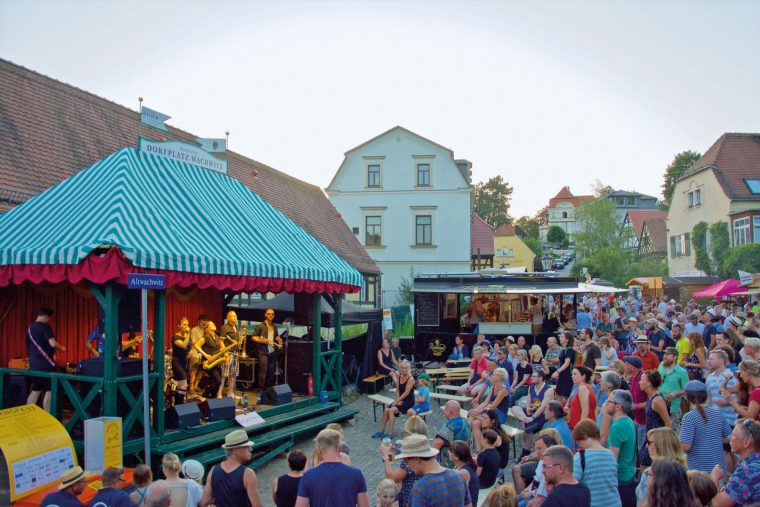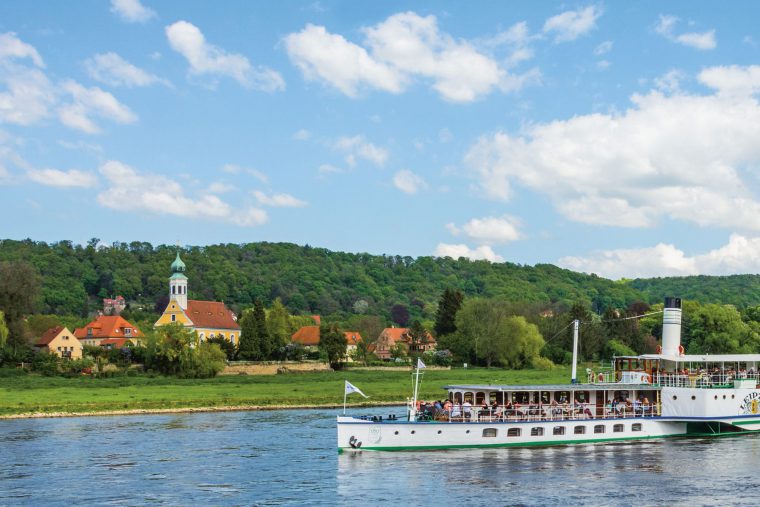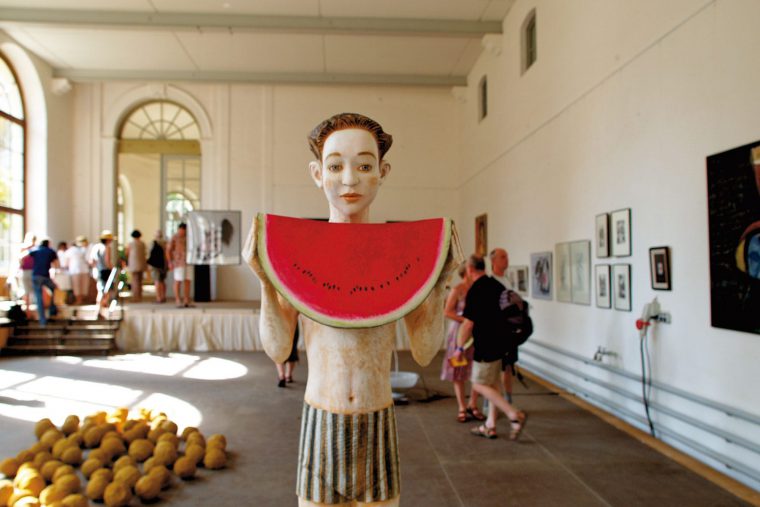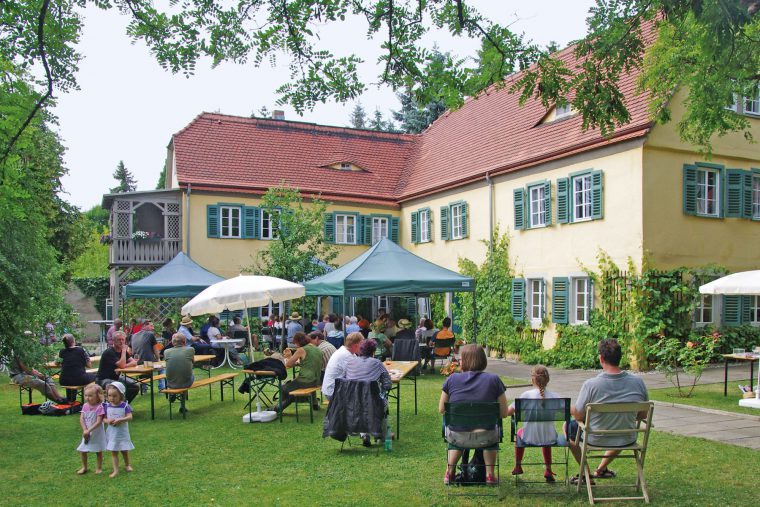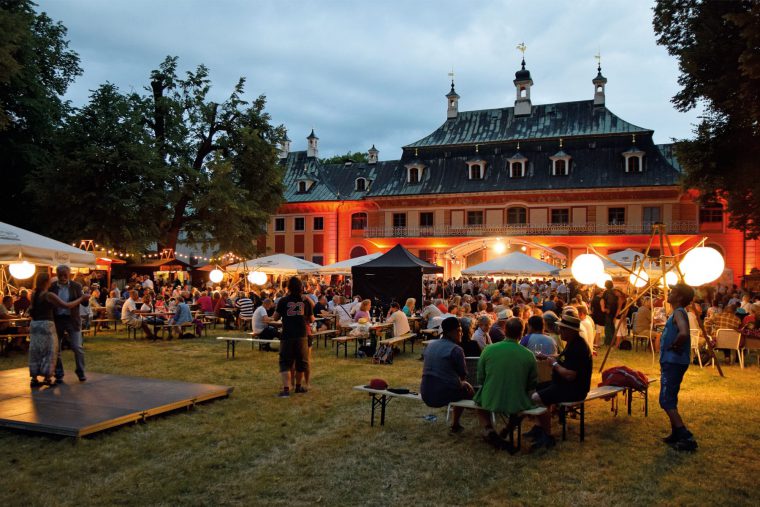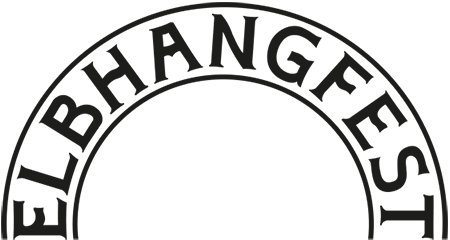The Elbhangfest is picturesquely nestled on Dresden’s Elbe slope between the villages of Loschwitz and Pillnitz. The Elbhangfest is a cultural walk across five former villages.
Loschwitz
For many, the Elbhangfest walk along the slope begins with a walk over the “Blue Wonder” bridge — today a fascinating technical monument. On the banks of the Elbe below the bridge, concerts are held, children’s worlds are set up and restaurateurs invite visitors.
Körnerplatz, which follows after the bridge, welcomes you as the “foyer” of the festival — with galleries, cafés, brew pub and city district office. The old Loschwitz village square, with its Joseph Herrmann monument (“called a mustard can”), moults itself into a cultural centre and gastronomic “hotspot” every last weekend in June. Traditionally, a classical opening concert takes place in the Loschwitz church. This beautiful baroque building with a central tower, designed by George Bähr and Johann Christian Fähre, was destroyed by bombs in 1945 and rebuilt from 1991 to 2006.
The branching off Fidelio-F.-Finke-Straße marks the beginning of one of the most beautiful promenades of the festival. It leads past the old fire station, behind which the youth village of Krachwitz offers young people many things that don’t always have to be loud, such as the popular “Silent Disco”. Hidden in one of the gardens diagonally opposite is the organisational heart of the festival, the “Blue House” association office. Passing traders, street artists, small bars and many food offerings, you arrive at the wine village in Albert Park, romantically arranged under tall trees.
One of the architectural and cultural-historical dominants of the Elbe slope is the Künstlerhaus, built in 1898, with its sixteen studios, workrooms and twelve flats. The tall building breathes Italian flair and regularly opens some studios.
Wachwitz
Along Pillnitzer Landstrasse, many private properties invite visitors to linger, and a year-round “Kultursalon” (cultural salon) has been created in the Old Wine Press. On the way from the shore to the village square on the higher ground, the Wachwitz Sailing Club regularly invites visitors to socialise and go sailing on the Elbe. From here, the Dresden TV tower can be easily seen.
If you want to take the path across the hillside, you can walk up to the Royal Villa and across the “Royal Vineyard” to Altwachwitz. Josef-Herrmann-Strasse, named after the opera singer, begins at the “Red House”. Continuing up the Wachwitzer Weinberg road, you reach the “Royal Estate” with the “Rhododendron Park”, which is one of the most important in Europe today.
Next to the confluence of the Wachwitzgrund, Freytag’s vineyard on Pillnitzer Landstrasse is one of the oldest houses in the village. The hosts run a romantic “Besenwirtschaft” (wine tavern), where the house’s piano students give concerts and serve their own wine from the Pillnitz and Wachwitz Royal Vineyards.
As the perceived geographical centre of the Elbe slope festival, we have now reached the village square of Altwachwitz, where the old Sorbian Rundling can still be recognised. Some of the half-timbered houses around the stage, which is designed with a historical feel, are over 400 years old. The small fountain on the square is popularly called the “elephant fountain” because Sarrasani’s circus elephants drank here in 1917.
At the bottom of the valley a little further landwards, the artist couple Marion and Uwe Hempel invite visitors to the grounds of their studio and home. Other private venues are Wollnerstraße 3, the “Casa Casimir” on Pillnitzer Landstraße and the “Pila-Baugarten”, where globetrotters, mountaineers and tour operators Götz and Sabine Wiegand invite artists and guests to their garden.
Down on Pillnitzer Landstraße between the village centres of Wachwitz and Niederpoyritz, the “Grottenwirtschaft” established itself as a rather hard rock-oriented street club with a view of the Niederpoyritzer Elbfähre at the “Erbgerichtsklause”, a remnant of the once proud “Erbgericht” inn.
Niederpoyritz and Hosterwitz
The village of Niederpoyritz has three small festival centres in addition to the long-standing art, antique and flea market along Pillnitzer Landstrasse. The former Oberer Gasthof, built in 1898, has been home to Anka Böthig’s “naturfarbenwerkstatt” since 2016, which contributes to the festival with a rich palette of exhibitions, sounds and tastes.
In the “Gardens of Laubegaster Straße”, jazz and world musicians of the finest calibre do the honours, embedded in the particularly loving hospitality of the local residents. Instrumentenbau Neumann also regularly opens its doors. The Pension zur Königlichen Ausspanne and the garden of the Wagner family are among the addresses for connoisseurs who like it quiet. The Elbhangtreff. in and around the old school building presents particularly exciting programmes with and for children and young people and invites you to “Café Gustav”.
Hosterwitz begins at the Kuckschebach stream, which flows in an arc down the slope past the Gustavheim. Even the street names pay homage to the southern flair of this area – from Van Gogh Street to Leonardo da Vinci Street. A cultural heavyweight is the Carl Maria von Weber Museum. As an authentic place of life and work, it is the only museum in the world dedicated to Carl Maria von Weber.
The Brockhaus Villa and the Café Nestwerk are among the open properties. In one of the oldest local wine taverns – Weinbau Christian Decker – people enjoy singing together and with male choirs. Around the corner at Bodemerweg 3, the open garden at family
Eckoldt family with romantic music, puppet shows and a glass of wine with friends.
The distinctive landmark of Hosterwitz on the Elbe is its “Maria am Wasser” boatman’s church, consecrated around 1500, and it is here and in the associated parish garden that the Hosterwitz Elbe slope festival heart beats loudest. A few metres further on, the view of the castle opens up over the Maille railway leading to the park, where flying musicians and stalls cavort and equestrian games enliven the large festival meadow.
Pillnitz
In 1720 construction began on the Pillnitz pleasure and summer palace, one of the most important buildings of the Dresden Baroque. Augustus the Strong’s vision was a Saxon Venice, and gondolas also docked at the open staircase on the Elbe. One such gondola – the triton gondola of Elector Friedrich August III of Saxony, built around 1800 – can be seen in the park. At the Freitreppe, a grandiose ship’s staircase, the “Wasserbühne” (water stage) today finds enthusiastic audiences with programmes especially geared to inclusion. The neighbouring 17th-century Lion’s Head Bastion is a very special place – instead of the pleasure house that used to stand on it, there are tables and chairs and conversations with a view of the Elbe for the festival.
Between the Water Palace and the Mountain Palace, the pleasure garden invites visitors to stroll and listen. As the Pillnitz Park Festival, the Elbe Slope Festival subsumes a variety of artistic events throughout the park. The Orangery is one of the few weatherproof venues of the festival. Here, exhibitions and performances drawn from the slope’s rich artistic scene are presented, framed by theatre, chamber music and the “dance tea” that has already become a tradition.
The Pillnitz art and craft market takes place on the former castle car park and around the old guardhouse. Along the lilac courtyard with its famous old trees with twisted trunks is the wine village with a stage and many local vintners and guests.
Small-scale concerts are held in the palace chapel, consecrated in 1830, and the domed hall in the New Palace. The Palm House is the iron Pillnitz counterpart to the “Blue Wonder” bridge – although it was built some thirty years earlier – as early as 1861.
Every year on the last weekend in June, numerous small oases of festivity also develop in the village of Pillnitz around the palace park. The local restaurateurs are an integral part of the Pillnitz festivities: Parkcafé, Schlosshotel, Einkehr am Palmenhaus and Wipplersche Backwirtschaft. The volunteer fire brigade also opens its new premises.
The final highlight of the festival area is the Pillnitz Vineyard Church, designed by the Zwinger master builder Pöppelmann and consecrated in 1725. Together with local winegrowers from the surrounding vineyards, the IG Weinbergkirche offers an enchanting market and programme on this beautiful site in the middle of our cultural landscape (not only for the festival).
Gallery

